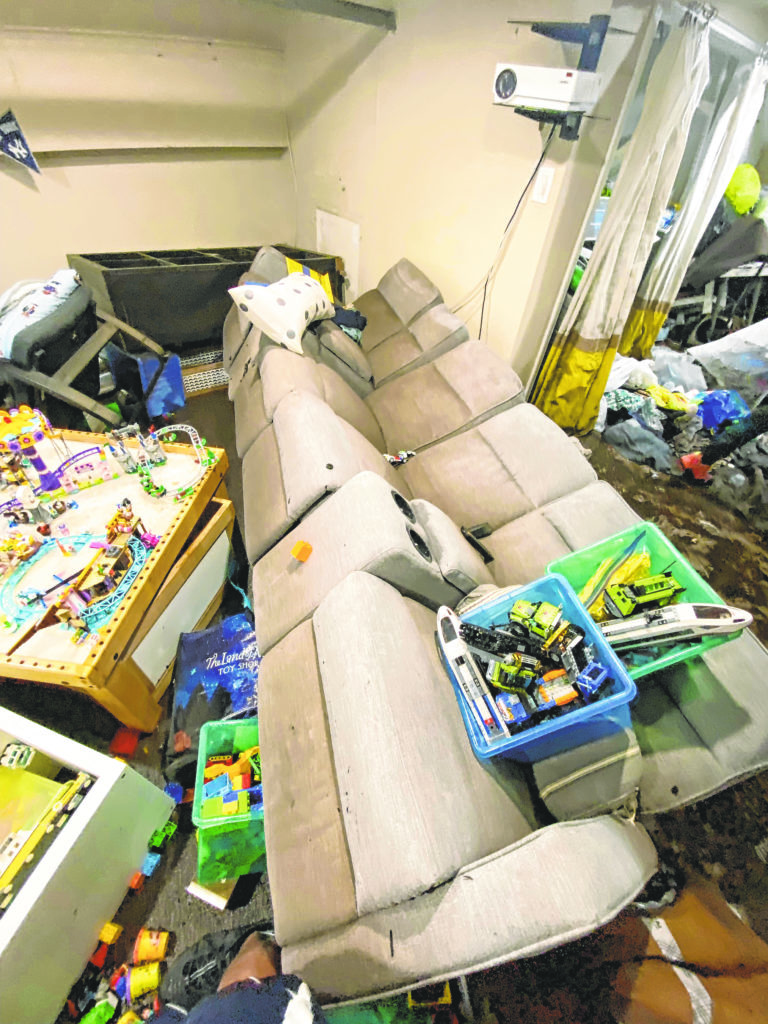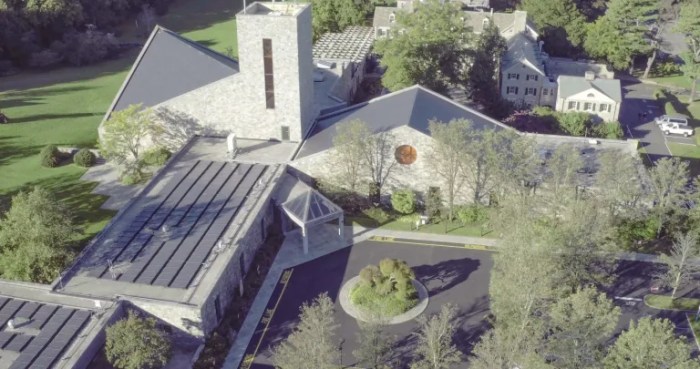The remnants of Hurricane Ida surely packed a punch when it hit New York State earlier this month, as state and federal experts, according to Gov. Kathy Hochul’s office, estimate more than $140 million in damage to public infrastructure and property. More than 2,900 homes suffered damage.
That damage was evident on the North Shore of Nassau County, as soaked couches, rugs and stored away items ruined in basement floodings were left out on front yards for pick-up.
In Glen Cove, the police department, high school and library experienced extensive damage, causing temporary closures at the library and the school. In Manhasset, flooding tore up basements on Nassau Avenue. In Plandome Heights, a basement collapsed on Plandome Road from the water pressure and in Port Washington, a mudslide reportedly buried cars, among other damages across the county.
On Sept. 5, Gov. Hochul visited communities across the state impacted by Ida, and after her visit, she signed a request to U.S. President Biden for an expedited Major Disaster Declaration, which he approved. This would deliver individual and public assistance to eligible New Yorkers who have been displaced or suffered damage as a result of the storm, including those who do not have flood insurance.
“New Yorkers are still recovering from the damage across our downstate communities, and this request I signed and submitted to President Biden can secure the financial resources that are due to New Yorkers who suffered unimaginable devastation as a result of the storm,” Gov. Hochul said. “I have seen the heartbreak and pain of these families firsthand, and I pledge not to forget them and to ensure they get the resources they need to recover.
Our recovery and support services teams remain on the ground, doubling down on our restoration efforts until New Yorkers are able to stand on their feet again.”
Gov. Hochul also directed that $378 million in previously-awarded hazard mitigation funding from the Federal Emergency Management Agency be devoted to bolstering New York State’s infrastructure against extreme weather.
“To give some perspective, as I frequently do in a rain storm… I have to see how our storm drains are working or else I can’t sleep,” said Plandome Heights Mayor Kenneth C. Riscica. “So I go out at 10 p.m. and I get drenched walking three feet to my car. And I go out and I start my normal route. My normal route takes me down Bay Driveway, because it’s the narrowest and steepest street in the village.”
Upon getting there, Riscica said, he saw that it was flooded “wall to wall.”
“I started driving down Bay Driveway and the waves are crashing all around my car,” Riscica said. “And I said to myself, this is not good. I’m at serious risk, as I drive further, of getting this car lifted and just getting dragged down to the bend.”
Riscica said he’s never seen anything like that in Plandome Heights. He said he believes that no matter how clean those storm drains were, the flooding would have happened there.
Gov. Kathy Hochul and FEMA announced on Sept. 10 that Nassau County was approved to become a part of that Major Disaster Declaration that will help provide for federal financial relief and deliver both individual and public assistance for eligible New Yorkers recovering from flooding and other storm-related damages caused by the remnants of Hurricane Ida.
Jared Armendariz, who lives on Nassau Avenue in Manhasset, said FEMA agents were assessing the damage in his neighborhood on Sept. 7, something incredibly validating as his entire basement was under eight feet of water, seeping into the main level of his house. The experience during the storm was stressful, Armendariz said, as his two children, ages 9 and 13, were frightened.
“The basement filled up in minutes,” Armendariz said, describing how him and his son had to leave the basement after attempting to prevent the water from flooding. “Then my daughter noticed that the water was now coming on the first floor. So now she’s crying and the kids were very scared, they didn’t know how much water was going to keep coming into the house.”
Later that night, Armendariz said, firefighters came to his block to check on the residents. The water had receded downstairs, but “it was a mess.”
“There was still cars in the street,” Armendariz said. “A fire truck was stuck in the street.”
And the next morning, he said, there was still seven feet of water in the basement.
Armendariz described only being able to see one step leading into the basement. Family and friends came to his house to help him clean up and pump out water, but he lost soaked items, such as his washer, dryer and refrigerators, and his wooden floors that are now warped and twisted. “I just have so much damage,” he said.
Having FEMA agents and local officials like State Assemblywoman Gina Sillitti and Town of North Hempstead Councilwoman Veronica Lurvey visit the property made homeowners like Armendariz feel represented. The catch basins and street in front of his home have also been cleaned since.
“As county executive, keeping Nassau safe is my highest priority,” Nassau County Executive Laura Curran said. “That’s why I fought to make sure Nassau County would be eligible for federal assistance from FEMA after the remnants of Hurricane Ida hit our county. I saw first-hand the devastation and massive flooding caused by this storm, so I urge anyone who was affected to please begin the application process for federal disaster assistance relating to any of your uninsured or underinsured damage.”
Victims of the storm can meet face to face with FEMA staffers and representatives at the Michael J. Tully Park Physical Activity Center at 1801 Evergreen Drive in New Hyde Park.
To apply for FEMA help, visit DisasterAssistance.gov, use the FEMA mobile app or call 800-621-3362. Operators are on duty seven days a week from 8 a.m. to 7 p.m. local time. Multilingual operators are available.




























